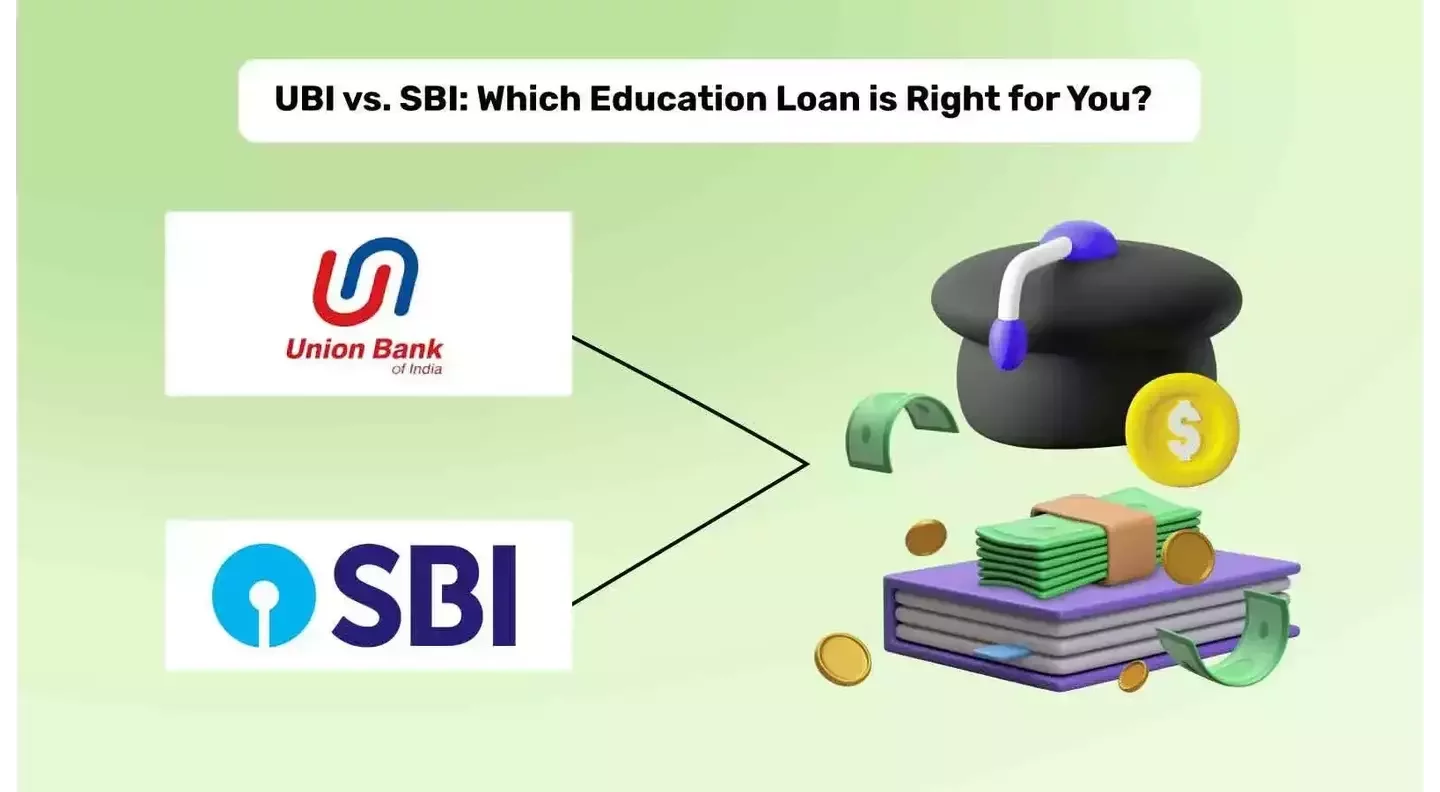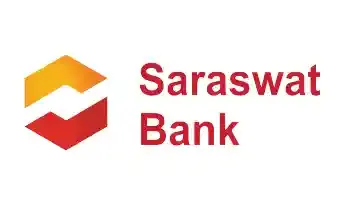Get instant loan offer suitable to your profile !


On this Page:
Compare UBI vs. SBI education loans: interest rates, eligibility, benefits, and application processes to make an informed decision for your study abroad journey.
In the Indian financial marketplace, public sector banks are often considered a reliable choice for obtaining a reasonably good loan. Union Bank of India (UBI) and State Bank of India (SBI) are two of the top options for education loans for students. While choosing the right bank for an education loan is important, students must consider factors like interest rates, loan amounts, collateral requirements, and repayment flexibility.
_x000D_ _x000D__x000D_ _x000D_
While both banks offer competitive loan schemes, SBI is known for higher unsecured loan limits, whereas UBI provides attractive terms for select institutions. To assist you in making an informed decision, we present a comparative guide between two prominent public sector banks that offer study abroad loans.
_x000D_ _x000D_ _x000D_
_x000D_
Union Bank of India and State Bank of India are well-known institutions in the financial marketplace, particularly when it comes to finding abroad education loans from public sector banks in India. While both banks offer similar features, there are a few distinct factors that you should consider when deciding between these lenders. Below is a table that can provide you with an overview of the differences between UBI and SBI.
_x000D_ _x000D_| Basis of difference | _x000D_UBI | _x000D_SBI | _x000D_
|---|---|---|
| _x000D_
Loan amount (unsecured) _x000D_ | _x000D_
_x000D_
Secured loan: Up to INR 1.5 crore _x000D_ _x000D_Unsecured loan: Up to INR 40 Lakhs _x000D_ | _x000D_
_x000D_
Secured loan: Up to INR 3 crores _x000D_ _x000D_Unsecured loan: Up to INR 50 Lakhs _x000D_ | _x000D_
| _x000D_
Interest rate* _x000D_ | _x000D_
_x000D_
Secured loans: _x000D_ _x000D_
Unsecured loans: 9.75% _x000D_ | _x000D_
_x000D_
Starting at 9.65%* _x000D_ | _x000D_
| _x000D_
Moratorium period _x000D_ | _x000D_
_x000D_
Course + 12 months _x000D_ | _x000D_
_x000D_
Course + 6 months _x000D_ | _x000D_
| _x000D_ _x000D_ | _x000D__x000D_
0 - 15% _x000D_ | _x000D_
_x000D_
10% _x000D_ | _x000D_
| _x000D_
Processing fees _x000D_ | _x000D_
_x000D_
| _x000D_
_x000D_
10,000 INR + GST _x000D_ | _x000D_
| _x000D_
Processing time _x000D_ | _x000D_
_x000D_
Up to 14 days _x000D_ | _x000D_
_x000D_
Up to 15 - 20 days _x000D_ | _x000D_
| _x000D_
Unsecured loan eligibility _x000D_ | _x000D_
_x000D_
Only for masters program _x000D_ | _x000D_
_x000D_
N/A _x000D_ | _x000D_
| _x000D_
Premiere institute list _x000D_ | _x000D_
_x000D_
Have a list that can lead to fluctuation in interest rates _x000D_ | _x000D_
_x000D_
N/A _x000D_ | _x000D_
| _x000D_
Loan Approval Basis GRE / GMAT? _x000D_ | _x000D_
_x000D_
No _x000D_ | _x000D_
_x000D_
No _x000D_ | _x000D_
*Interest rate as of April 2024
_x000D_ _x000D__x000D_ _x000D_ _x000D_ _x000D_
 _x000D_
_x000D_
 _x000D_
_x000D_
 _x000D_
_x000D_
 _x000D_
_x000D_
 _x000D_
_x000D_
 _x000D_
_x000D_
Click here to learn more about SBI Education Loans.
_x000D_ _x000D_ _x000D_
_x000D_
 _x000D_
_x000D_
 _x000D_
_x000D_
 _x000D_
_x000D_
 _x000D_
_x000D_
_x000D_
_x000D_
 _x000D_
_x000D_
 _x000D_
_x000D_
_x000D_
_x000D_
 _x000D_
_x000D_
 _x000D_
_x000D_
 _x000D_
_x000D_
 _x000D_
_x000D_
Click here to learn more about UBI Education Loan.
_x000D_ _x000D__x000D_ _x000D_
 _x000D_
_x000D_
Both Union Bank of India and State Bank of India have specific requirements for documents, as applying for an education loan involves submitting a range of documents. Below are some of the documents that you must prepare beforehand.
_x000D_ _x000D__x000D_ _x000D_
 _x000D_
_x000D_
 _x000D_
_x000D_
 _x000D_
_x000D_
 _x000D_
_x000D_
 _x000D_
_x000D_
 _x000D_
_x000D_
 _x000D_
_x000D_
 _x000D_
_x000D_
 _x000D_
_x000D_
 _x000D_
_x000D_
When choosing between banks for an education loan, the loan quantum, or the loan amount offered, plays a crucial role and can significantly impact your decision. The loan quantum determines the maximum amount the bank is willing to lend, and it should align with your financing needs. Different courses and institutions may have varying tuition fees and living costs, so it's essential to evaluate whether the loan quantum offered by a bank can adequately cover your expenses.
_x000D_ _x000D__x000D_ _x000D_
The maximum amount that can be borrowed if you pledge collateral goes up to INR 1.5 crore in the case of UBI and INR 3 crores if you borrow from SBI. However, this is not the case with unsecured education loans. In the case of an unsecured education loan, SBI can provide you with up to INR 50 lakhs, while UBI can provide you with up to INR 40 lakhs.
_x000D_ _x000D__x000D_ _x000D_
 _x000D_
_x000D_
The interest rate refers to the percentage charged by a lender on the borrowed amount. It represents the cost of borrowing and is an essential factor to consider when selecting a bank for an education loan as a slight increase and decrease in interest rate can have a huge impact on borrowing costs. Both SBI and UBI have a floating interest rate but the major point of differentiation is between their starting point of interest rates.
_x000D_ _x000D__x000D_ _x000D_
SBI has a reasonable interest rate starting from 9.65% for female candidates and 10.15% for male candidates. On the other hand, you can borrow money from UBI for your education loan at an interest rate that starts from only 9.25% for listed universities and 10.5% for non-listed universities.
_x000D_ _x000D_ _x000D_
_x000D_
The moratorium period refers to a specified timeframe during which borrowers are not required to make principal or interest repayments. It provides financial flexibility to students, allowing them to focus on their studies without immediate repayment obligations. Different banks may offer varying moratorium periods, and selecting a bank with a longer moratorium period can provide more breathing space and financial relief. By carefully considering the moratorium period offered by different banks, students can choose a loan provider that aligns with their financial needs and provides the necessary support during their academic journey.
_x000D_ _x000D__x000D_ _x000D_
UBI provides a moratorium period that extends up to the duration of the course plus an additional 12 months. In contrast, SBI offers a moratorium period that extends only up to the duration of the course plus 6 months. Both banks may offer a free moratorium period, allowing borrowers to defer principal and interest repayments. However, in certain cases where the loan application is not good, borrowers may have to pay simple interest during the moratorium period.
_x000D_ _x000D_ _x000D_
_x000D_
Processing fees and processing time are significant factors to consider when choosing between banks for an education loan. The processing fees are charges imposed by the bank for processing the loan application. Comparing the processing fees of different banks allows you to evaluate the additional costs associated with obtaining the loan. Moreover, the processing time refers to the duration it takes for the bank to review and approve the loan application. A shorter processing time means quicker access to funds, which can be crucial when dealing with admission deadlines or financial obligations.
_x000D_ _x000D__x000D_ _x000D_
UBI stands out with a relatively shorter processing time of 7 - 10 days, allowing for quicker access to funds. Moreover, UBI charges a processing fee of INR 10,000 plus GST for loans up to INR 40 Lakh and INR 20,000 plus GST for loans above INR 40 Lakh. On the other hand, SBI has a longer processing time of 15 - 20 days and charges a processing fee of INR 10,000 plus GST. By opting for UBI, applicants can benefit from a faster loan application process, who need funds on an urgent basis.
_x000D_ _x000D_ _x000D_
_x000D_
When choosing between banks for an abroad education loan, eligibility criteria and the bank's approved university list are crucial factors to consider. Each bank may have specific eligibility requirements regarding the applicant's academic qualifications, admission to recognized universities, and co-borrower criteria. Ensuring that you meet the eligibility criteria of a particular bank is essential to increase the chances of loan approval.
_x000D_ _x000D__x000D_ _x000D_
| _x000D_
Did you know? UBI is one of those public sector banks that accepts Gram Panchayat property as well for collateral while SBI does not accept the same. In a few cases, UBI can also accept agricultural land in alignment with state laws. _x000D_ | _x000D_
_x000D_ _x000D_
After analyzing all the differences, it can be concluded that there is no one bank that is a clear winner in all the aspects mentioned above. There were some aspects in which SBI is better, then there are some factors in which we can say that UBI is a better choice. It all comes down to one's individual requirements.
_x000D_ _x000D__x000D_ _x000D_
In case you have collateral to pledge, but it is a Gram Panchayat Property, you can go for UBI education loans. On the contrary, if you want a secured education loan but your university is not approved by UBI, which leads to an increase in interest rate, then SBI can be a clear choice.
_x000D_ _x000D__x000D_ _x000D_
Now that you know several differences between UBI and SBI, you can confidently start your abroad education journey by comparing each of the aspects with your personal requirements and then evaluating which bank’s loan offering better aligns with you. You have to check all the things before applying for an education loan abroad. If you still can’t decide which is better for you and believe that evaluating the best bank in accordance with your requirements is too much work for you, then don’t worry, let GyanDhan help you. All you have to do is check your eligibility with us.
_x000D_ _x000D__x000D_ _x000D_ _x000D_ _x000D_
 _x000D_
_x000D_
Yes, SBI and UBI both provide unsecured education loans; the difference between them is their loan quantum. In the case of SBI, you can get up to INR 50 lakhs as an unsecured education loan, while in the case of UBI the loan quantum for an unsecured education loan can go up to INR 40 lakhs.
_x000D_No, there is no pre-payment penalty that you would have to pay in case you decide to foreclose your loan.
_x000D_The processing fee that is charged by both SBI and UBI is INR 10,000 plus GST. In case of loans exceeding INR 40 lakhs, UBI charges a processing fee of INR 20,000 plus GST.
_x000D_In the case of SBI, the collateral property that you are pledging must not be either agricultural land or a Gram Panchayat Property.
_x000D_Check Your Education Loan Eligibility

Ask from a community of 10K+ peers, alumni and experts
Trending Blogs
Similar Blogs

Network with a community of curious students, just like you
Join our community to make connections, find answers and future roommates.. Join our CommunityCountry-Wise Loans
Best Lenders for Education Loan

ICICI Bank

Axis Bank

Union Bank

Prodigy

Auxilo

Credila

IDFC

InCred

MPower

Avanse

SBI

BOB

Poonawalla

Saraswat